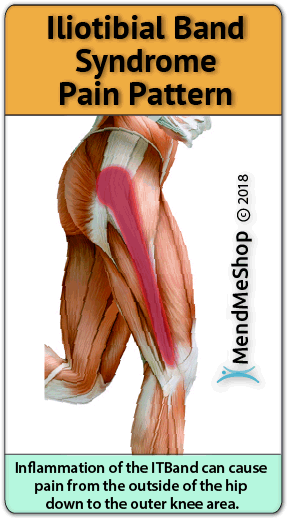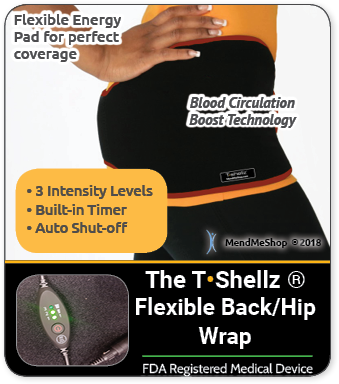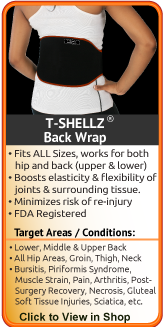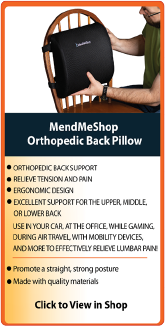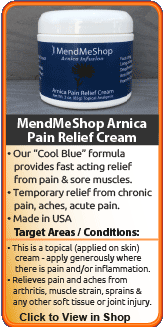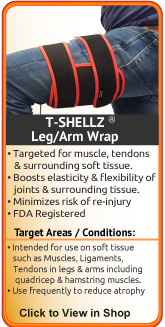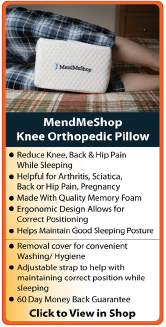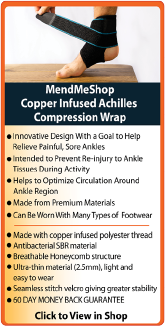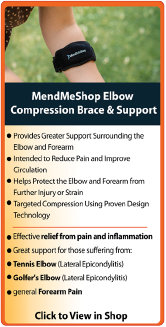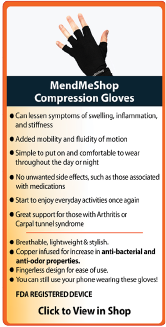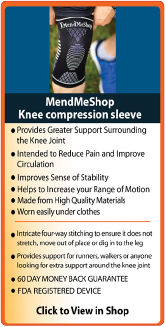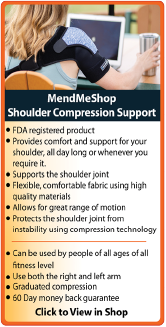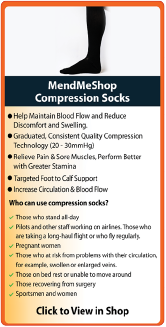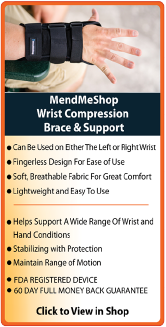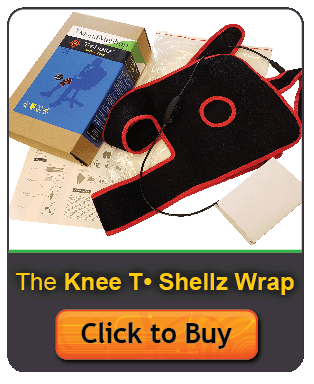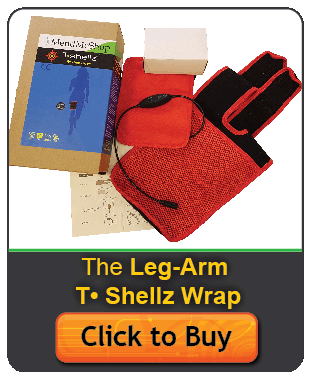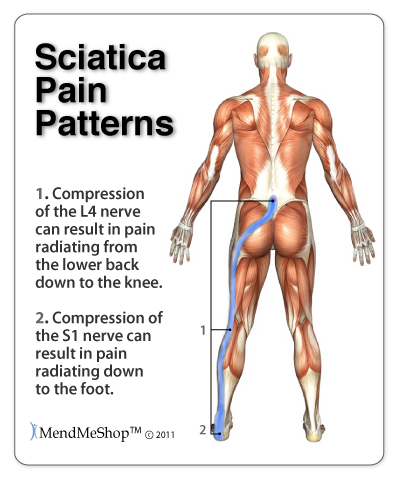An Advanced Look Into Causation, Prevention & Possible Solutions for Soft Tissue Injuries of the Hip & Lower Back
A Large Number of our Clients Have:
- Experienced an Accelerated Rate of Recovery from Soft Tissue Hip Injuries
- Reduced Stubborn Inflammation in their Hip(s)
- Reduced Their Hip Pain Significantly on a long term basis
- Increased the Range of Motion (ROM) in their Hip Joint
- Decreased the Incidence of Overcompensation Injuries
- Decreased their Chance of Re-Injury due to Increased ROM and enhanced Blood Flow.
- Decreased their Chance of Re-Injury by Learning About What Caused the Injury in the First Place.
...they simply did the research and found the right treatments.
Before deciding on a hip treatment path, an understanding of the hip joint, the type of hip injury, and the three major stages of soft tissue healing is critical. With the right knowledge and the right treatment options, you can accelerate your recovery without the fear of re-injury or setbacks (which unfortunately, happens to many people - we will explain why further down the page).
The Hip Joint is a Big Deal!
The Importance of the Hip Joint to the Human Body is much the same as the Importance of the "Grand Central Terminal" to the City of New York. You may have heard the term "Everything flows through the hips" - and it is said for good reason!
Major nerves and arteries extending into the lower body pass through the hips, and pinch points for these major nerves are often found in the lower back or the hip. Pinched nerves can happen for many reasons, but soft tissue inflammation due to muscle imbalance, gait issues, and/or overcompensation is one of the major causes.
The amount of force that the hip bears is truly amazing when you delve into some data. If you can, take a look at the abstract from this study: "Hip joint loading during walking and running, measured in two patients" (PubMed,opens in new window). The forces measured were as a percentage of body weight from 2 subjects (one with a bilateral joint replacement and the other with one instrumented hip implant) and are as follows*:
- Walking:
At 1 km/hr walk speed, peak forces were at approx 280% of Body Weight (BW).
As walk speed increased, so did peak forces.
At 5 km/hr walk speed, peak forces were at approx 480% BW.
- Jogging:
Jogging and very fast walking raised peak forces to approx 550% BW.
- Stumbling:
In one patient, a peak force of 870% BW was observed during stumbling.
*Bergmann G, E. A.
Bergmann G, et al. "Hip Joint Loading During Walking And Running, Measured In Two Patients. - PubMed - NCBI ." Ncbi.nlm.nih.gov. N. p., 2018. Web. 18 May 2018.
Hip injuries are quite common, often the result of a quick blow to the hip joint or through years of common movements such as climbing stairs or from sports such as golfing or skiing. Regardless of how the injury happens, a hip injury is painful and the joint can feel very unstable. Hip injuries can persist for years and can impede your ability to perform many common tasks that you probably took for granted before the injury. Recovery can take a long time but proper healing is essential to regain strength and get you back to the activities you enjoy.
The 3 Stages of Healing
Regardless of what soft tissue condition you may be suffering from, if the pain is signficant and/or impacts your day to day life - get to a physician for a proper diagnosis. Once you know what you are dealing with, you and your doctor can now confidently undergo a proper treatment plan. In some cases - such as a complete tear - there is no option other than to undergo surgery. If the diagnosis has confirmed a soft tissue injury such as a strain or partial tear, your doctor will most likely prescribe a conservative treatment protocol including rest and the use of a Cold Compress or Ice Pack for reduction of pain and swelling. When dealing with a soft tissue injury (an injury to muscles, tendons, ligaments and/or cartilage), there are three major stages of the healing process. These stages are as follows:
Stage 1: Reduce Initial Inflammation (if there is any)
Inflammation is the body's natural response to an immediate hip injury and is a normal part of the healing process - helping to reduce tissue infection in the early stages of injury. Swelling, pain, heat sensation, redness, and loss of function are the main symptoms experienced.
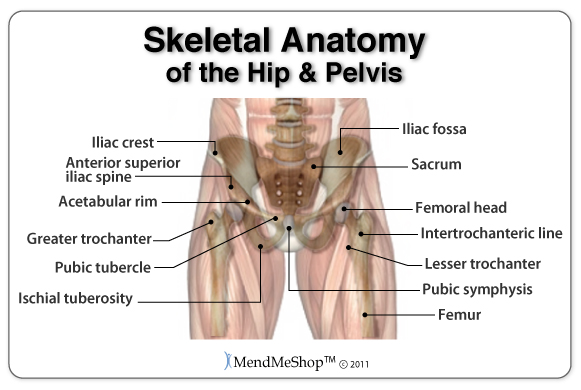
The combination of rest, topical pain relief cream and the use of a Cold Compress or Ice Pack is the gold standard in medicine for minimizing tissue damage and reducing inflammation after injury or activity. It serves as a critical bridge into the next phase of the healing process.
There are certain cases where inflammation is very minor or even non-existent. This behavior is often found in tendinosis and osteoarthritis injuries. If there is no swelling, then there is little need for cold applications - and as such, treatment should proceed directly to stage 2.
Stage 2: Enhance Blood Flow to the Injured Soft Tissue
Tendons,ligaments, cartilage, and muscle fibres are dense tissues. As a result, they naturally receive limited blood flow and this is precisely why injuries to these tissues take so long to heal. The challenge is, how do you effectively increase blood flow to these tissues?
- Rigorous exercise is out of the question as it will lead to further injury.
- Physio (PT) is helpful, but that only happens a few times a week.

When you have a muscle, tendon, ligament or bursa injury, there is reduced blood flow to the injury site - inflammation and reduced movement (lack of activity or on-going immobility) will reduce the flow of blood - and if you think about it, this makes sense. Moving your hip when there is swelling is quite painful; as such it is very common for anyone with a hip strain, a pulled hip or a hip tear to have significant reduced mobility. Over time, a significant reduction in activity leads to atrophy - a shortening (and weakening) of muscles, tendons and ligaments in the area. As the hip slowly heals, you run a high risk of (re)straining this same area as they have become shorter and weaker due to lack of use. If there has been some healing, you could re-injure it all over again, and even injure it worse.. basically turning an initial acute (recent) hip injury into a chronic (long term) hip injury.
It is through the blood the body carries the oxygen, nutrients and water that injured tissues rely on for recovery.. It is well known that increased blood flow helps your body accelerate the healing process.
This is why the Back/Hip TShellz Wrap® is such an important tool. The whole purpose of the wrap is to accelerate blood flow to soft tissue. The end result: blood vessels will naturally expand and allow for more blood flow to reach the very tissues you are trying to heal. In addition, this process will help clear the area of toxins and excess fluid build up, thereby reducing inflammation.
Stage 3: Recognize That Healing is a Process
With dedication, the right tools, and the right information - you will achieve your goal of a sustainable recovery. A combination approach of cold, TShellz Wrap® treatments, and functional movements will make it happen much more quickly in the vast majority of cases.
In our experience, soft tissue repair rates via conservative home treatment methods using a dedicated, comprehensive approach have surprised many of our clients, but will differ from person to person. In nearly all cases, however, it is very important to stop whatever you were doing that created the injury in the first place (ie. running, yoga).
If you have questions, call our office at 1-866-237-9608 (toll free continental US).
What Exactly is the Hip?
Most of you are reading this because you suspect you have a hip injury, or perhaps you have already received a confirmed diagnosis. Either way, you are most likely interested in learning; what are the steps I need to take to properly heal it?
We receive questions like this on a daily basis. The approach we take is based on years of experience and based on sound, scientific principles. We discuss these approaches in-depth further down the page and throughout the rest of the website. Before getting into that however, it is important to understand the characteristics of the hip joint and the role it plays in regard to body mechanics.
The hip joint, medically termed as the "acetabulum", is a ball and socket joint cushioned by cartilage and held together by muscle groups and ligaments responsible for moving the leg in multiple directions. Walking, bending, crouching and climbing stairs are typical activities that require hip joint movements. These muscle groups help stabilize the joint as the leg moves.
The acetabulum is lined with a unique structure called the labrum which is a piece of fibrocartilage that forms a cup-like ring within the joint. It helps the femur sit properly in the socket, making the hip more stable. The hip joint is surrounded by other connective tissue including powerful muscles, ligaments and tendons that also stabilize the femur in the socket during it's wide range of powerful movements.
The ligaments of the hip attach one bone to another and are essential for stabilizing the complex movements of the hip. Hip ligaments deal with very large forces and as such, are very tough and strong. Ligaments surrounding the acetabulum (the ischiofemoral, iliofemoral, and pubofemoral ligaments) make up the joint capsule of the hip and help control the movement of the hip.
Bursae (plural for bursa) are flat, fluid filled sacs that function as cushions between your bones and the muscles (deep bursae) or bones and tendons (superficial bursae) to reduce friction and allow your soft tissue to slide over bone effortlessly during muscle contraction. They are lined with synovial tissue that secretes fluid rich in protein and collagen; this fluid acts as the lubricant between areas in your body where friction is greatest.
Common bursae in the hip include the deep trochanteric bursa, trochanteric bursa, iliopsoas bursa, ischiogluteal bursa, gluteus medius bursa, and the ischial turbosity bursa.
The IT band (also called the iliotibial tract, ITB or iliotibial band) is a long, thick tendon that runs from the pelvis, along the outside of the hip and femur, down to the knee. Several hip muscles connect to the iliotibial band and it's essential in stabilizing your knee while walking and running.
The iliopsoas is a deep hip flexor tendon that passes along the front of the hip joint. The iliopsoas tendon attaches the iliopsoas muscle (iliacus, psoas major, and psoas minor muscles) to the femur at the lesser trochanter and is the primary hip flexor muscle.
There are four groups of muscles in the hip that are responsible for moving the leg in several directions - the iliopsoas muscles, the hamstring muscles, the adductor muscles and the gluteus muscles.
Read more about hip muscles, tendons, ligaments, and bursae here.
Once one or more of the hip muscles or tendons are injured it becomes very difficult to recover 100%.
Re-injury of the Hip Must be Avoided at All Costs
Constant re-injury needs to be avoided at all costs! Please excuse the obvious statement, but I really need to drive this point home. Re-Injury is very common... why? Everyone wants to get back to their regular lifestyle once the pain has reduced. Here is where you have to be careful - often, much of the pain is due to inflammation - so, once you iced the area and the swelling dropped, a lot of the pain probably disappeared too. So then you start back at your regular lifestyle and then all of a sudden the old injury starts flaring up again - this is re-injury!
Just Because The Pain Has Dropped, It Does Not Mean The Underlying Injury Has Healed
Re-Injury is bad because sure, it delays the healing process, but what's worse is that every re-injury and additional healing cycle increases the amount of scar tissue that builds up in the area of your original hip injury (the ischiofemoral ligament, for instance). This applies to muscle, tendons, ligaments and other connective tissue as well.
Scar tissue is a weak form of collagen - hard, inflexible, and tough to get rid of once it begins to take hold. The more scar tissue that develops, the more you lose the range of motion in your hip. With excess scar tissue build up, the injured tissues and the hip in general will remain weak and very prone to re-straining and re-tearing.
While you can go a number of days and even a few weeks without any major setbacks during the injury.. inevitably, a certain movement or motion will happen that causes your injured soft tissue to strain and even tear once again. This is attributed to the scar tissue build up and will result in the buildup of yet more scar tissue and a further reduced range of motion (ROM).
The more scar tissue that develops, the greater the risk of winding up permanently injured with chronic pain or arthritis. Scar tissue means that your hip will not perform as well as it once did and it makes it much more prone to injury later on. The longer the injury remains, the risk of atrophy increases and the risk of more scar tissue increases. This is why it is critical to treat your hip injury now rather than later.
Continuous re-injury and build-up of scar tissue makes it more likely that you will wind up with chronic pain, reduced Range of Motion or even arthritis (permanent damage).
A Hip Injury Does Not Have to Persist For Months Or Longer. Here is Why It Does For Many
Recovery from a hip injury can take a long time, especially when some of the less effective, traditional methods are utilized. This is simply because many treatments either focus on masking of pain or are too inconsistent to provide sustainable improvement.
Hip Injuries - They Certainly Are Life Changing Aren't They...
If you've been living with the agony of a hip injury for some time now, it's almost a sure thing that you're feeling discouraged, tired, and worn-out. Seemingly simple chores are now impossible - like climbing stairs, getting off the sofa without help, getting into a car or even standing for significant periods of time. The constant pain has no doubt interrupted your sleep, just adding to the long-term misery that this condition can bring on.
It's just not possible to stop life's activities for weeks/months to rest hip injury unless maybe you are lying in a hospital bed where nurses can attend to your every need. What ends up happening is we continually re-injure the hip through our daily activities - further setting back our recovery. Each time the hip is placed under stress, the chance of tissue breakdown is increased and the growth of more scar tissue is more probable. This is how a hip injury can start a long term downward spiral that could end with a chronic bad hip, atrophy or even hip replacement surgery.
Long Term Hip Injuries Not Only Affect the Hip - They Will Lead to Other Conditions and Injuries.
Every time we use our injured hip, damaged and swollen tendons and muscle tissue move; when they are inflamed, every movement hurts. With injured tissue, pain happens - sometimes a LOT of pain, so we try not to move it. So, when doing something we need to use our hip for (getting dressed, walking, climbing into a car, gardening), we start to use the knees and back more. If with localized left hip pain or right hip pain, we use the other side of the hip instead even though it is inconvenient.
A couple days later (after purposefully avoiding movement of our hip), the pain has gone down (as well as the swelling) and this is where the trouble begins! The pain disappeared with the swelling but we still aren't fully healed! Not knowing this, we start using our hip normally again and then the injury swells up again like it did before - all because the injury wasn't fully healed in the first place.
Eventually, we use the other joints more and more - or even use our knees instead of our hip for a lengthy period of time. This is why knees quickly start to hurt - they are being overused now - they really cannot handle the increase in loads that the injured hip once handled. Soon, aches and pain can become commonplace in the lower body and back - all as a result of the original hip injury and the body's instinctive nature to "protect" the hip - all because the injury wasn't fully healed in the first place!
We continually re-injure the hip through our daily activities and now this injury has become a chronic hip injury.
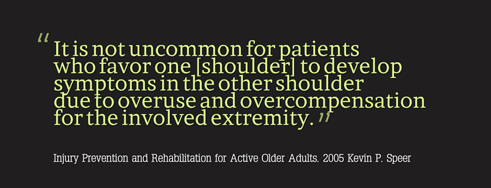
Muscle imbalances result, placing tension on bone and softer tissues - leading to a misalignment within the upper body. The extra stress on the opposite side of the body will also result in weakness and fatigue of the tissues - increasing the chances they can eventually be injured or gradually degenerate. This is a textbook example of how you get an overcompensation injury. In some cases, physical therapists warn that overcompensation can be very dangerous as it will affect gait or alignment on a permanent basis.
An injury to one hip muscle can easily lead to straining in other areas, making an overall recovery hard to initiate. For example, a serious muscle strain in the right side hip can often lead to over-straining of the left side hip. Most commonly, the injury occurs on the dominant side, so the risk of straining the other (weaker) side increases. The longer the injury (and corresponding pain) persists, the greater the chance that you will sustain more strain from overcompensation, eventually leading to issues in those areas as well. To minimize potential secondary injuries, know that it is important to deal with your injury quickly and completely.
Truly, hip injuries can become a vicious cycle - which is why it is absolutely critical to focus on methods that improve and strengthen the injured tissues in a timely manner. The faster you truly heal, the less chance you have of sinking into a downward spiral of re-injury, scar tissue growth and overcompensation injuries.
Okay, So I Have a Hip Injury...What Should I Do Now?
Stage 1: If the hip injury is very recent - use a good quality cold pack and Arnica Pain Relief Cream. If the injury has been going on for awhile, then skip to Stage 2 below.
Recommendation 1: If you are experiencing pain and swelling in the very early stages of the injury (first 48 to 72 hours), the first step in a conservative treatment protocol would be to focus on reducing the discomfort by applying a quality cold pack to the injured hip along with a high quality pain relief cream such as our Arnica Infusion Cream.
Not only will you use your cold pack for the first 48 to 72 hours after the injury, but you should also use it during other stages of the healing process. Some examples include...
- after any activity that stresses the hip in a moderate way. It is wise to quickly apply cold to not only reduce the pain, but to also minimize tissue damage that may have occurred during the prior event.
- If you have a job that requires you to place some demands on your injured hip. If that is the case, apply cold immediately following work and if the opportunity allows - use it for 15 to 20 minutes during lunch or another break time.
- If you are in a post-operative situation where cold compression would be utilized heavily for at least the first few weeks following the procedure. Similarly, if you are scheduled for upcoming surgery, then you may be advised to use a cold compress to keep swelling down before the operation.
Having a Cold Compress or Ice Pack available at home to use if and when the need arises is helpful. Many of you already do so.
However, it is not uncommon to over-focus on cold while ignoring the most critical aspect to healing - nourishing the injured tissues with a healthy supply of blood flow needed to repair and rebuild the injured tissues. This leads to the most important stage ...
Stage 2: Focus on Increasing Blood Flow To The Injured Tissue - As This is How Your Body Can Heal Soft Tissue For the Long-Term
Even though the concept is simple, improving blood flow to injured soft tissue can be difficult. When the injury is hip related, the challenges are even greater. Traditional methods require your muscle to move to promote blood flow (exercise), but that same motion that promotes blood flow can at times lead to making your pain and condition worse.
- Have you re-injured your hip by returning to work too quickly?
- How many times in the past have you aggravated your hip just trying to perform basic tasks around the home?
- Is your debilitated hip preventing you from work or activities you love to do?
Most people we deal with tell us these scenarios have happened to them many times in the past. Perhaps it has already happened to you. Promoting blood flow within a muscle or soft tissue injury to help the body heal itself is a concept that has been utilized for centuries. This is where the focus has to be if you are seeking long-term improvement.
Oxygen and nutrients, carried within the blood, are critical for the body to heal itself. Without proper blood flow, recovering from an injury or condition will be delayed...sometimes for a very long period of time.
The real challenge is how do you promote blood flow to the hip injury site without causing further injury? This goal is further complicated by the fact the hip (and muscles controlling the hip joint) are involved in the majority of the physical movements we perform each day. Back, upper leg and hip pain can be interconnected and are often experienced in conjunction with one another. Many of the muscles that surround the hips are connected to muscles in the lower back, which in turn connect to the hamstring and elsewhere in the body.
An injury to one of these regions usually leads to straining in other areas, making an overall recovery hard to initiate. People tend to "chase the pain", meaning they only focus on treating an area that is actively painful, while not taking into account the fact they other areas of the body will be overcompensating...eventually leading to issues in those areas as well.
In order to provide long lasting relief from your hip pain, you need to identify all the factors that are contributing to it. These factors can include muscle imbalances, short leg syndrome, herniated discs, trauma and tightness to surrounding muscle and soft tissue, etc. The list is certainly significant and it can be frustrating for people who may have no idea where to begin.
Now, on to recommendation 2 in the journey to heal your injured hip ...
The Back/Hip TShellz Wrap® - A Healthy Hip For The Long Term

The best option we came across in our research to accomplish the all important blood flow increase to soft tissue in the hip is the Back/Hip TShellz Wrap®. Use of this device results in a dramatic increase in blood flow to the tissues located in and around the area of application - all in a non-invasive manner.
Have you seen what happens when you add water to a flower wilted from drought? In essence, your injured hip is much like a "wilted" flower; your body wants to heal its injury, but needs lots of nutrients to do it. Blood brings life to your tissue by delivering healing nutrients and oxygen that are vital for their growth and survival. In addition, the blood carries away toxins and waste cleaning the area and healing it faster. Without a good supply of blood, your hip simply won't heal properly.
Heat energy generated by the TShellz Wraps® operate by increasing blood flow in our injured soft tissue. This means ligaments, muscles, and tendons. The objective of the TShellz Wrap® is to increase blood flow in these targeted areas, resulting in relaxation of the vessel walls. The vessels then gently expand, allowing for more nutrient rich blood flow along with extra oxygen to reach the damaged tissues. Plus, the enhanced blood flow helps in flushing waste and fluid build-up from the injury site - further enhancing the ability of the body to heal.

Once energy from the TShellz Wrap® absorbs into the hip and surrounding area, the metabolic response then kick starts the repair process.T•Shellz Wrap. More blood now begins to flow effectively to injured soft tissues within the body - the injured tissue needs the extra blood flow to heal as it is through the blood the body carries the oxygen and nutrients needed for proper and long-term healing.
Using a TShellz Wrap® will not expose you to the risk of causing further harm to soft tissue like you can when using rigorous exercise. The Back/Hip TShellz Wrap® accomplishes the goal of enhanced blood flow without the need for intensive exercise and as such reduces your risk of re-injury.
The TShellz Wrap® - Accelerated Blood Flow for Your Hip Soft Tissue
The intention of a Back/Hip TShellz Wrap® is to ease pain by dilating blood vessels, decrease stiffness by elongating soft tissue, improve blood circulation, and boost metabolism and enzyme activity. In stimulating localized blood flow to damaged soft tissue, you provide needed oxygen and nutrients to grow strong healthy collagen. In addition, you will experience a clearing of toxins and excess fluid build up from the injury site. Over the intermediate term, this helps to reduce incidents of swelling as trapped fluids will be whisked away - reducing pressure on blood vessels.
Using the TShellz Wrap® is truly a unique experience. Within moments of applying a treatment to your hip, you can feel the healing sensation due to the increase in blood flow deep within the area. During a treatment, and for quite some time after you finish, the treated area will feel relaxed and less painful. It's a very soothing sensation and extremely effective.
Who Should Use the Back/Hip TShellz Wrap®
We recommend the use of a Back/Hip TShellz Wrap®:
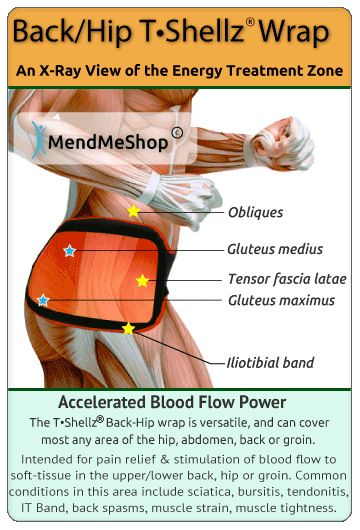
- If you have bursitis, tendinitis or other soft tissue damage in your hip (or back), then the TShellz Wrap® will provide the all-important function of boosting blood circulation where it is needed most.
- If you are dealing with soft tissue conditions affecting your range of motion.
- If you have a chronic soft tissue hip condition that has lasted for years- this device is intended to kick start the recovery process and help strengthen the surrounding and supporting tissues.
- If you are still working with a hip strain or mild tear, the TShellz Wrap® will help relax tissue in the hip prior to work and after a day at the job.
- If you are still trying to enjoy your favorite activities such as gardening, tennis, golf, etc - use the TShellz Wrap® prior to activity to help reduce risk of re-injuring or re-aggravating those targeted tissues.
- If you are suffering from bursitis and want to treat a major source of it (inflammation and damage to tissue surrounding the bursa sac). Through trauma, overuse or degenerative changes, muscle and tendons surrounding the bursa sacs will tighten and constrict. When they do, they place pressure on the bursa, causing it to become irritated. Applying a TShellz Wrap® to the area will help relax tissue in the treatment area, taking pressure off the bursa.
- If you are experiencing atrophy in the hip area and want to reduce the chance of re-injury while stretching - this is a perfect treatment to use before activity, by enhancing blood flow and elongating soft tissue.
- If you have been to a clinic for some form of massage or stretching and your PT or physician has recommended conservative treatments for home.
- If you are experiencing tightness in your muscle(s) and want to reduce the chance of re-injury while stretching - we recommend the use of a TShellz Wrap® before you stretch.
Increased Blood Circulation = Increased Healing Capability
TShellz Wraps® contain a unique Carbon Fiber Energy Pad which is flexible and will shape to conform to your body. This Energy Pad emits a uniform wave of perfectly safe energy over its entire surface. This energy is absorbed by soft tissue in the treatment area, opening blood vessels, resulting in an increase in blood flow. Increased blood circulation is what your body needs to maximize its cabability of healing soft tissue and this is why we recommend the TShellz Wrap®.
The Back/Hip TShellz Wrap® is an FDA Registered Medical Device and is suitable for use in therapeutic clinics and FROM HOME. It is completely safe for people and patients to use for themselves.
The technology found in a TShellz Wrap® has been used for decades in the worlds of professional and amateur sports - a contributing factor as to why athletes seem to recover from injuries so quickly.
Have you ever wondered by an athlete can return to activity after 4 or 5 weeks following a hip injury - while your average person takes much longer to return back to normal? The secret isn't really that much of a secret - it involves consistent treatments (meaning multiple times a day) using a treatment like the TShellz Wrap® to stimulate blood flow to the injured tissues. Most athletes have the luxury of using in-house facilities many times per day.
How many us can afford the time and money to visit a clinic multiple times a day? Very few indeed. This is how you can gain some of the advantages that athletes enjoy in their injury recovery - by using a device like the Back/Hip TShellz Wrap® two or three times a day on a consistent basis.
Consistent Treatments = Consistent And Long Term Improvement
What Else Makes the Back/Hip TShellz Wrap® So Special?
We believe the TShellz Wrap® to be one of the most effective home treatments to increase localized blood flow to soft tissue in and around the treatment area.
We can promise that you will receive a product that is designed to be safe and does what it is supposed to do... reduce pain (as stated in "Therapeutic Heat and Cold", 4th edition. - Ed. Justus F. Lehmann, M.D., Williams, and Wilkin) temporarily increase length & flexibility of soft tissue (as stated in "Therapeutic Heat and Cold", 4th edition. - Ed. Justus F. Lehmann, M.D., Williams, and Wilkin) and aid your body in recovering from tendon, muscle and other soft tissue injuries via enhanced blood flow.
The unit plugs into a standard wall outlet to get its power. The nice thing about the power supply is that the same unit can be used in North America and overseas as well. It has the capability to operate between 110v and 230v.
The TShellz Wrap® has a special signal controller that can be set for 3 different power levels of application (3=High, 2=Medium, 1=Low). The cord is long enough that you can sit or lie comfortably and watch TV, read or surf the net while you're using it.
Treatments are max 30 minutes in duration and the device can be worn over clothing. This allows you to use the device at work, at home, or really anywhere you have access to an electrical outlet.
A TShellz Wrap® application is intended to produce the following results:
Enhance blood circulation and
increase the levels of oxygen within your blood.
This, in turn, improves function of the immune system which increases the body's ability to eliminate toxins and other waste by-products resulting from damaged tissue at the injury location. This allows the body to more easily stimulate the self healing process.
Stimulate the production of collagen,
which is a building block for human tissue.
Many soft tissue injuries are the result of trauma to a tendon or muscle, usually causing the tissue to tear. As a result of the tear, your body triggers a natural healing process resulting in pain, inflammation, and the creation of scar tissue, then eventually reinforcing that band-aid solution with flexible tissue (proliferation). Increased blood flow will make this process more quick and efficient in the majority of cases.
Enhance the extensibility of soft tissue.
It is generally accepted that heat will enhance both the flexibility and the extensibility of soft tissue. This is an important point. Many people with achilles, knee and back conditions (to name a few of many) often experience re-injury due to the fact the damaged muscle or soft tissue is tight and the range of motion is restricted. Even the most minor of activities can cause recovering tissue to strain, sprain, or even tear. Every time this happens, your recovery is delayed. This is why using the TShellz Wrap® not only now, but also into the future, is wise. The TShellz Wrap® warms tissue, and thereby increases it's elasticity...all without risk of causing further harm - greatly reducing your chances of re-injury.
It is also intended to provide relief to some who are dealing with nerve related issues.
TShellz Wraps® applied to muscles and soft tissue that surround the nerves should help them become more loose, as heat is known to increase the flexibility and extensibility of soft tissue. You may find this will alleviate tightness which may have led to nerve compression and the subsequent pain it produces.
Intended to reduce stiffness in joints.
Osteoarthritis occurs when cartilage and meniscii degenerate. Over time, two bones in the joint rub together with little or no protection from cartilage. This leads to pain and inflammation in the joint as the space within the joint starts to decrease without the cushioning, and stiffness starts to become a bigger and bigger problem. The TShellz Wrap® is intended to generate warmth and an increase in blood flow - resulting in less stiffness and better range-of-motion.
Contribute to your overall well-being.
Increased blood flow should result in a stronger immune system and an ability for you body to recover from soft tissue injuries more quickly.
Believe me when I say this; words alone cannot accurately describe what the TShellz Wrap® can do for you. It truly is something you need to experience first-hand.
...A Quick Recap of Benefits That Can Be Achieved Via the Back/Hip TShellz Wrap®..
- Can be used ANYWHERE on the Back, Hip or Groin - very versatile
- It soothes pain and whisks away toxins
- It can be used before exercise to warm up the hip to reduce the risk of injury (heat elongates soft tissue and makes it more flexible)
- FDA Registered medical device for use in home or clinics - high quality, 1 year warranty, 60 day trial period (100% refund guaranteed)
- Increases temporary flexibility and length of tissues (reducing the re-injury factor when used before activity)
- Carbon fiber Energy Pad is strong, lightweight, and flexible - contours very easily
- A boost in blood flow helps maximize the body's ability to recover from soft tissue damage. This can be beneficial in saving time and money when associated with doctor or physio visits
- A boost in blood flow will maximize the body's ability to recover quickly. This can be beneficial in post-surgery rehabilitation, getting you back to work faster. Do not use until at least 6 weeks after surgery, and only after approval from your doctor.
When Should I Use My TShellz Wrap During the Day?
The most common question we receive from individuals prior to purchasing is - how many times a day should I be using my hip wraps and when should I be using them? While treatment plans will differ for each individual and their specific injury, there are general guidelines that should be adhered to.
- Use a Cold Compress or Ice Pack when you are experiencing inflammation (usually after exertion or movement of the injury area).
The Hip TShellz Wrap® would then be used:
- Right after rising from bed in the morning (as this is when it is most stiff)
- Prior to going to bed at night (to relax the hip, allowing for better sleep)
- Before you know you will be using your injured joint (going to work, driving, typing, etc).
Stage 3 - In Between Treatments With TShellz Wrap®, Apply Our New Fast Acting Pain Relief Cream Called ARNICA INFUSION
Dealing with aches and pains affecting the foot, ankle, leg, knee, hamstring, hip, back, arm, shoulder, elbow, wrist, or hand? If so, then applying the Arnica Infusion to any of these targeted areas will bring about fast relief from the pain and sore tissues. Simply apply a small amount of cream to the body and moments later, you will experience a soothing and comforting sensation over the area.
Arnica Infusion is specially designed to relieve pain due to sore muscles and joints associated with arthritis, backaches, sprains, strains, and bruises. No matter if you are dealing with an acute injury, chronic pain, or a general "flare-up" - you will experience fast relief from pain and inflammation.
This is a product that many of our current MendMeShop customers asked us to develop. So we focused our time and resources over the past few years and came up, with we believe, will be one of more effective, fast acting, topical pain relief creams on the market.
You are likely familiar with some of the standard topical agents on the market as most of our customers use them. The are mass marketed and even found in most department stores now.
Well, we are here to say that Arnica Infusion goes many steps beyond what they offer.
Made in the USA at an FDA registered manufacturing facility, you can be assured that Arnica Infusion is both safe and effective. We only source top grade ingredients while implementing strict quality control checks during every step of the production process. Expect the same high quality that MendMeShop customers have been accustomed to since we started the company in 2005.
The "Cool Blue" formula is the perfect balance between the smooth application of a cream and the effective absorbing factor of a gel. It is not too thick and not too thin - just the right texture. Best of all, it feels very nice on the skin!
Each application of Arnica Infusion feels so comforting and soothing, we are certain it will become an item you will not want to live without.
Arnica Infusion Ingredients
The Arnica Infusion formula is based on a combination of scientific research and the use of high quality ingredients. The properties within the formula were chosen for their pain relief, anti-inflammatory, and soothing qualities.
The acting ingredients within the formula include ones many of us are familiar with; along with ones that have not received a lot of publicity (only in research circles). Extensive testing resulted in a blending of ingredients that provides the most synergistic of benefits.
The notable ingredients in the Arnica Infusion formula include:
- Arnica - powerful anti-inflammatory, speeds recovery, enhances circulation
- Menthol - provides deep penetrating pain relief with a nice cooling sensation
- Vitamin B6 - promotes normal nerve function
- MSM - supports healthy connective tissues, anti-inflammatory
- Ilex Leaf Extract - increases circulation, skin conditioner
- Vitamin E - anti-inflammatory, enhances circulation, hydrates the skin
- Aloe - anti-inflammatory properties, soothes the skin
- Tea Tree - enhances penetration of ingredients
Extensive quality control procedures during the manufacturing process ensure the ingredients and final product are both safe and effective. We would not stake our reputation on anything but the best.
When Do I Apply the Arnica Infusion?
While At Work
Apply Arnica Infusion at work to help reduce acute discomfort associated with overuse of muscles and joints. No matter if you are in a physical demanding job or work within an office environment, you will be placing stress on different parts of the body and aches and pains will result.
Before Or After Work, Sports, & Activity
If you suffer from a sprained ligament, pulled muscle, strained tendon, or even bruising - apply Arnica Infusion for quick relief of the pain.
Chronic Pain Suffering
Application of Arnica Infusion can be done up to a maximum of 4 times per day on a consistent basis to help bring about relief from various pains and aches.
In-between Treatments With the TShellz Wraps®
Follow up your T-Shellz and Cold treatments with an application of Arnica Infusion. Combine the pain relieving benefits of Arnica Infusion along with the healing benefits of the wraps to make your recovery go much more smoothly.
Do not apply Arnica Infusion within a 2 hour timespan before a TShellz Wrap® treatment.
Whether you decide to use the Arnica Infusion in conjunction with the TShellz Wrap® and other treatments - or if you decide to use the cream as a stand-alone product - you will not be disappointed with the results. We guarantee it.
A Note On OverCompensation
Since you are reading this, you probably know that serious hip injuries do not just disappear. Over time, it will wreak havoc on your knees and lower back due to lack of movement, over-compensation and a change in gait. It will also wreak havoc on your opposite hip side, due to overcompensation. Recovery takes a longer time for such chronic (long term) injuries, but proper healing is essential to regain strength and get you back to the activities you enjoy.
The longer your injury endures, the greater the risk of running into serious overcompensation injuries and a permanent change in gait.
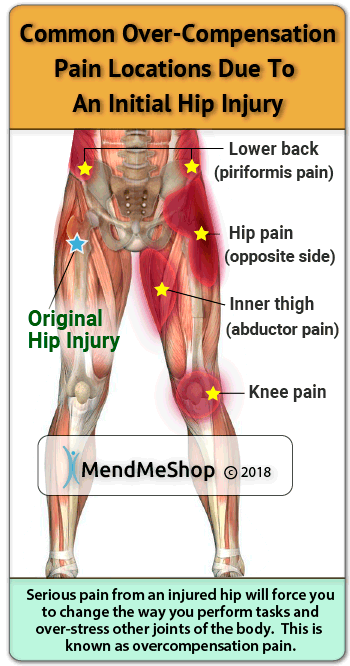
Everything in the human body is connected. An IT-Band injury can lead to other injuries over time if not treated properly. For example, the knee of your opposite leg may start hurting due to increased strain on it while you are trying to walk. On-going pain in this area could potentially result in long term (chronic) knee pain.
You may also over-strain your hip or lower back on the opposite, healthy side because you will automatically put more weight on your non-injured side to cope with everyday activities. When you experience pain on the opposite side of your body, this is something called "over compensation" pain.
Over time you may also change the way that you walk when your hip is hurting. If you change the way that you walk, how you get in and out of a car or even the way you climb a flight of stairs you may irritate your lower back. Usually a hip injury will happen on the dominant side (if you are right handed, this would be your right hip). When this happens there is a higher risk that you will over-strain your weaker side that is compensating for your injury.
On-going injury, chronic conditions and over compensation pain are all reasons why it is important that you remain proactive in your recovery. This is why it's also critical to completely heal your hip before returning to activity. If you don't focus on healing your injury quickly and completely you run the risk of interrupting your lifestyle in a major way.
To Stop Re-Injury & Reduce the Risk of a More Serious Overcompensation Injury, You Need to Heal Quickly & Completely!
Anyone in need of rapid recovery and complete healing must consider a comprehensive treatment plan that includes an effective means to minimize swelling and inflammation yet also stimulate healing and tissue elasticity. We have found no better set of tools that can be used at home than this:
Conservative Treatment Tools Our Clients Have Used to Help Limit Damage & Boost The Body's Soft Tissue Repair Process to the Hip at Home:
- A Cold Compress or Ice Pack to reduce inflammation wherever there is pain and/or swelling (as soon as possible).
- A Back/Hip TShellz Wrap® to increase blood-flow to the treatment area (a Localized Enhanced Circulatory Response® Treatment).
- MendMeShop Arnica Pain Cream for temporary relief of pain due to sore muscles and joints.
- A High Quality Back Pillow and/or Knee Pillow for comfort while sleeping or sitting
- An Exercise & Stretching Plan to prevent muscle atrophy and shortened tendons in the Hip joint. A proper plan will increase elasticity and strengthen the muscles and tendons in the hip, knee, and ankle.
Conservative treatment tools just like these have been used successfully by thousands of hip injury sufferers - just like you.
TShellz Wrap® = Enhanced Blood Flow in the Treatment Area
We believe the use of TShellz Wraps® for boosting blood flow to soft tissue in the area of application is one of the most under-utilized home treatment options available on the market today. We have client after client that have tried many options out there and have been amazed at how effective and fast the TShellz Wrap treatment can relieve pain and increase blood flow in the hip.
With regular use of the Back/Hip TShellz Wrap:
- Your pain due to soft tissue strain will be reduced*.
- Due to increased blood flow, soft tissue in the treatment area on the hip will be expected to recover at an accelerated rate. Increased extensibility of soft tissue due to the heat application will also help reduce the risk of worsening the injury while mobile*.
- Tissue in the treated area should experience a larger range of motion and increased extensibility of collagen tissue* due to the heat effect on soft tissue. This should translate into a reduced rate of re-injury occurrence as soft tissue is known to lengthen and become more flexible when exposed to warm temperature. (*Chapter 9 of "Therapeutic Heat and Cold", 4th edition.
(amazon.com link - Ed. Justus F. Lehmann, M.D., Williams, and Wilkin)
Doctors and Surgeons are always improving the techniques used in surgery, and results from surgery now are much more positive than they were in the past. However, all surgeries introduce scar tissue, and recovery from hip surgery is better than ever but often disappointing when it comes to full recovery expectations.
If you do wind up getting surgery, know that rehabilitation at-home while attending regular PT or doctor appointments is vital for your overall recovery.
Consistent exercise and conservative treatment on a daily basis during your rehabilitation while working with your doctor or physical therapist is key. This is why you should seriously consider maximizing your recovery by using the TShellz Wrap® at home once you are approved for PT.
The more consistent you work at enhancing blood flow to surgically repaired soft tissue, the more consistent the healing process will be. Nourishing soft tissue with increased blood flow will bring more oxygen and nutrients (which are carried through the blood stream), giving the body a better ability to produce new, healthy collagen. In effect, you will help the body produce stronger tissues while potentially reducing the number of setbacks that can occur following surgical procedures.
Click HERE to Go To Our Online Store We take all major credit cards and Paypal.
If you have questions, call our office at 1-866-237-9608 (toll free continental US).
We are currently offering FREE SHIPPING and a 60 day trial period on all our Wraps.
Key Points To Keep in Mind When Treating Your Hip Injury
Make Sure That Complete Healing is Your #1 Goal
We all know that if the injury was healed, the pain would go away but what about the opposite situation? If the pain is gone, does that mean the injury is better? Unfortunately, this is not always true.
Too many people only focus on suppressing pain symptoms while providing less attention to the true healing aspects of the body. Experiencing less pain, while obviously a good short-term goal, never equates to underlying healing. Scar tissue can remain for months after one gets to a point of being relatively pain-free. However, as long the weak and brittle scar tissue remains, you are susceptible to re-injury or re-aggravation. Certain motions or movements can cause the weaker tissue to easily tear - resulting in some reversal of the recovery up until that point.
This is why we recommend for people to continue with their doctor or therapist recommended exercises and to continue with mild treatments of the TShellz Wrap® for a period of time - to better ensure complete healing.
Ongoing treatments to enhance circulation will soothe, relax and help promote a healthy recovery of your damaged hip muscles and tendons. Back/Hip T•Shellz treatments will also allow your soft tissue to extend further due to the deep warming sensation created by the enhanced circulation to the treatment area. The more extensible your tissues are, the less likely they are to strain or sprain.
The Back/Hip TShellz Wrap® is intended to be highly effective medical device for people suffering from sciatica, bursitis or other soft tissue hip & back injuries - such as a tear in your muscle, tendon or other soft tissue, strain, Tendonitis, tendinopathy, tendinosis, impingements, instability and pain associated with trigger points.
Many people who contact us about hip pain are unsure about the true causes of their discomfort. It is an amazing statistic and really goes to show how important it is to get a proper diagnosis from your physician. To really deal with a injury, you have to know the injury is - so get to the doctor and find out.
Resting Your Hip Will Help, But Only Temporarily
People tell us all the time, "I was told that if I stay off my feet for a few weeks, my hip pain will disappear for good." The truth is, hip pain is usually a culmination of numerous factors, which often include repetitive stress, high load issues due to excess weight, and/or overcompensation issues resulting from other muscle and soft tissue ailments.
It may take weeks or months for these hip pain triggers to surface, but when they do, merely resting will not solve the underlying issues. You need to utilize options that actually treat the source of the pain and help reverse the damage that has been done.
Resting has a role to play, but it is only one small factor in a recovery plan.
Identify What is Causing Your Hip Problem & Fix It
Otherwise, It May Come Back
In order to provide long lasting relief from your hip pain, you need to identify all the factors that are contributing to it. These factors can include muscle imbalances, short leg syndrome, herniated discs, trauma and tightness to surrounding muscle and soft tissue, etc. The list is certainly significant and it can be frustrating for people who may have no idea where to begin. This is one of many reasons why you should always get to a physician and, in some cases, a specialist to identify the source of your problem.
We Receive Calls All The Time From Customers Who Simply Want To Thank Us For Introducing Them To Our Amazing Products!
Let me tell you, we appreciate all the feedback we have received over the years. We have had many medical professionals, athletes and everyday people call and write to tell us about their positive experiences with our devices and the company in general. It never gets old hearing about the successes and it provides us with the motivation to continue doing what we do best - provide individuals with options to heal from the comfort of their own home.
Below is a small sample of some of the Customer Service comments we have received from customers...
The Best Service by Far!
The service from the Mend Me Shop is by far the best you could ever hope for. I have spoken to Paul on numerous occasions and his knowledge is very much appreciated.
Do not hesitate to order from this company. Their products are made well and work. Their customer service is the best you could ever hope for.
Charlie, North Carolina, USA
I have called the office and received helpful guidance. Really appreciate the help and so glad I found your products!
D. McBride, USA
Thank you, too, for the personal attention to your customers. A rarity, in today's world!
L. Anderson, USA
You guys are tremendous. I was overwhelmed by your speed and thoroughness regarding my problem.
T. Kienlen, USA
Thanks again for your wonderful products and support.
J. Sese, USA
The fact that you guys are there for us every step of the way matters as well. Your company is wonderful and that's a rarity these days.
M. Callahan, USA
The cost seemed minimal compared to what I had already spent at the doctor and physical therapist.
P. King, USA
Thank You so much superior service as well as unprecedented guarantee.
D. Hunzicker, USA
If you're tired of being told that resting, drugs and surgery are the only answers to your soft tissue injury.... Be optimistic, because there are effective alternatives for you.
The Reasons For Our High Success Rate - Our Customers!
We will never claim our products will work for everyone. That is simply impossible to achieve. Everyone has a different capacity for recovery and different circumstances behind their injuries and/or conditions.
In addition, some people may have a hard time sticking with recommended protocol in order to achieve benefits from our devices. Quite simply, our clients that have had successful outcomes have made a small effort to invest 60 minutes a day into the program. If you do the same, chances are you will be very happy with the outcome. The fact that our very low return rate speaks volumes as to the confidence we have that our products will be effective for you! I mean with a full 60 day money back guarantee on our wraps, there really is no risk in trying.
Right after you place an order, email us and we will have a plan developed immediately so you will be able to get started upon arrival of your parcel. We can't promise you miraculous results, however, we do promise to do everything we can to help you with your condition.
Everything you have read up to now has hopefully given you some hope.
However, words are meaningless unless a company stands strongly behind the products they sell. This is what sets us apart from others...we offer people a comprehensive, 60 day, full 100% money back guarantee. We take on all of the risk because we know our products work well for the overwhelming majority of people who purchase them.
We Will Support You Every Step of the Way
You are never alone when making a purchase from us. When we say we stand behind our products, we truly mean it!
If any question or concern arises, simply send us an email at any time (we check our emails constantly all throughout the day and night - even on holidays!). We will respond as soon as possible.
Click HERE to Go To Our Online Store We take all major credit cards and Paypal. If you are on your mobile phone, Click to Call Our Office (toll free continental NA). Simply call toll free
1-866-237-9608 to place an order with one of our knowledgeable Product Advisers. They have the ability to answer all your questions...ensuring you only receive the products you need.
Product Advisors are available 9:00 am to 5:00 pm Eastern Standard Time Monday to Friday. North America Toll Free
1-866-237-9608
Outside North America
+1-705-532-1671
We Stand Behind All Our Promises With An Iron-Clad Guarantee
- Guarantee #1 - Use your products diligently for up to 60 days and you will experience a significant reduction in pain. If not, I encourage you to call us to send back the items for a 100% refund.
- Guarantee #2 - You will not be left in the dark after purchasing any product form us. MendMyHip Advisers and Product Specialists are available Mon - Fri by toll free phone 1.866.237.9608 or email to answer your questions or concerns.
- Guarantee #3 - Your order is guaranteed to be shipped within 24 hours on every business day.
- Guarantee #4 - All purchases receive a one year, full replacement warranty with guaranteed, prompt service.
- Guarantee #5 - You could save hundreds of dollars and possibly more, by utilizing our products, and getting back to work sooner.
We Can Get You Started For Less Than The Cost Of A Few PT Treatments
Overall, we are able to be cost effective and value oriented due to two major reasons:
- Word is spreading and as a result, our sales are increasing. With this increase, we can achieve economies of scale...meaning we receive the best component pricing because our volume is high.
- We keep our overhead costs low by selling only on-line versus setting up costly distribution channels offline.
Think about it – you can now have the ability to treat your pain from the comfort of your own home while saving money in the process. Best of all, you are fully protected when making a purchase from us as we offer a 60 day, full money back guarantee.
The Next Step Is Up To You!
Living with pain is never easy as it affects your entire lifestyle. Nothing is more important than making the proper decision when it comes to treating your muscle injury. Most methods only mask the problems or provide temporary relief; they do not treat the pain at its source.
MendMyHip stands out in this regard as our goal is to help you heal for the longer-term.
The bottom line is, you are welcome to try our products for a full 2 months. If you do not receive the benefits that others have experienced, call us to let us know you will return your purchase back to us and we will issue a prompt & full refund. There will be no hard feelings.
The fastest option you have to get our product into your hands as soon as possible is by placing your order online - at this very moment..
Place your order on-line through our ultra-secure website by clicking the image below:

Or, Call Our Office. We are open Monday to Friday to allow you place an order over the phone. Simply call toll free 1-866-237-9608 to place an order with one of our knowledgeable Product Advisors. They have the ability to answer all your questions...ensuring you only receive the products you need.
North America Toll Free 1-866-237-9608
Outside North America +1-705-532-1671
If you choose to order through our online shop, know that we keep no credit card data on file. Once the transaction is completed, the credit information disappears from our internal systems.
As you can see, ordering from us is a very easy and safe process, no matter if choosing to order on-line or over the phone.
Are you still unsure about placing an order? let me address some questions that may causing some hesitation...
What is the success rate of the TShellz Wraps®? Do they really work?
We try and keep in touch with a large percentage of our customers, and we encourage them to do the same. In doing so, we have received a lot of feedback as we have been in the business since 2008.
We can say that the return rate on our products is only around 5 to 10% any given month. That is exceptional by anyone's standards.
Therefore, we can safely indicate that the overwhelming majority of people who purchase from us do achieve benefits with our products.
How much time do I need to dedicate for treatments? Are the products easy to use?
The TShellz Wraps® are very easy devices to use. After one or two uses, you will engage in the treatments with ease. Very detailed instructions are included and you are always welcome to contact us by phone or email if the need for help arises.
In regards to the TShellz Wrap®, it is ideal to use the device two or three times a day on average. Each treatment session is a maximum of 20 minutes in duration and the device will turn off automatically at that time. Typically, people use the TShellz Wrap® before bed, upon awakening (or not long after) and one other time during the day when the opportunity presents itself. For people in an office setting, many will use the device at work (as it can be worn over clothing). For others, they will use the device an our or two after work.
A Cold Compress or Ice Pack is primarily used following activity that stresses the injured tissues (following work, after a sports activity, or just suffering a general re-injury). This is done to reduce inflammation and to minimize tissue damage. Treatments are 15 to 20 minutes in duration.
How long has MendMeShop been in business
We established our firm in December of 2005. Our track record in this field continues to grow and we plan on being around for many decades to come.
What is your return policy? Is it the standard 30 days?
We go above and beyond what other companies offer - we offer a full 60 day money back guarantee with no restocking fees.

MendMyHip advisors do not work on commission, so be assured you will only receive fair and objective information.
Product Advisors are available 9:00 am to 5:00 pm Eastern Standard Time Monday to Friday.
Learn More About Hip Joint Injuries & TreatmentsI want to learn more about Hip Surgery & Post-Surgery Recovery I want to learn more about Circulation Boost I want to learn more about Ice & Heat: Which Is Better For The Hip? I want to learn more about Trigger Points in the Hip I want to learn more about Hip Surgery: Do I Need It?
FREE SHIPPING ON ALL OUR PRODUCTS
During your recovery, you will probably have to modify and/or eliminate any activities that cause pain or discomfort at the location of your soft tissue injury until the pain and inflammation settle. Always consult your doctor and/or Physical Therapist before using any of our outstanding products, to make sure they are right for you and your condition. The more diligent you are with your treatment and rehabilitation, the faster you will see successful results!
| 

